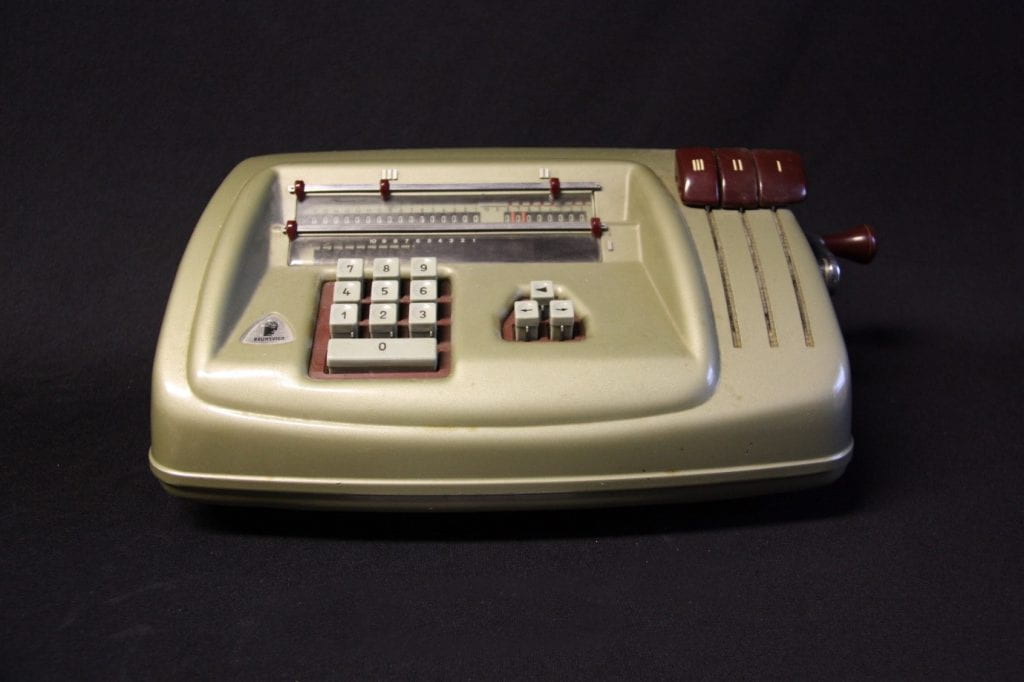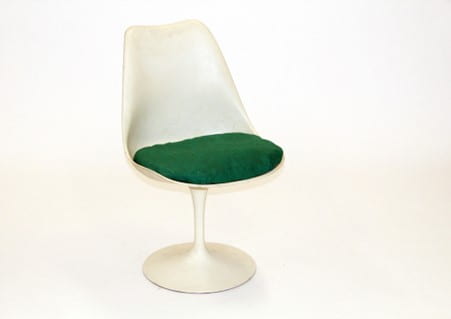The latest exhibition in the Lamb Gallery at the University of Dundee takes visitors on a trip back in time to the 1950s, an era of exciting new developments in art, design, science and medicine.
The exhibition, entitled Back to the Future, draws on a wide range of objects and artworks from the University of Dundee Museum Collections. It includes bold new designs for furniture and textiles, striking and colourful artworks and cutting-edge scientific equipment and medical breakthroughs.
Here are a few of the objects on display:

The German firm Brunsviga were the world’s leading maker of calculators. In 1955 they introduced this sleek and stylish new design.

Between 1947 and 1963, Paul Sougy (a curator at the Museum of Natural Sciences in Orléans) created designs for a series of teaching charts for the Auzoux company, famous for their anatomical models. Rejecting the usual, highly realistic style of biological illustration, he instead opted for simple designs with a bold and colourful graphic style that anticipated many other areas of 1950s design.

Finnish designer Saarinen revolutionised chair design with this series which sought to get rid of what he called the “slum of legs”. He originally hoped to create the entire form using a single piece of vacuum-formed plastic but to give the base sufficient strength it had to be made from a separate piece of aluminium. The chair’s futuristic look led to it being used in various science fiction films and TV programmes.

Not every scientific innovation of the 1950s was successful and one in particular would have catastrophic consequences. Distaval was the UK brand name for a drug better known as Thalidomide. It was developed in West Germany as a sedative but was also used to treat morning sickness in pregnant women. From 1956 it was available in Germany without prescription and was launched in the UK in 1958, with the claim that it “can be given with complete safety to pregnant women”.
However, in the 1950s, scientists were not aware that the effects of a drug could be passed through the placental barrier and harm a foetus in the womb. It took five years for the impact of Thalidomide to be realised – limbs, brains and other internal organs, eyesight and hearing could all be affected. The company withdrew the drug in 1961 though it continued to be sold in the UK until 1962.
In the six years that this drug was available to pregnant women, it’s estimated that over 10,000 babies were affected worldwide. Around half of those died within a few months of being born.

The Needlework Development Scheme had been founded in 1934 by the four Scottish Art Colleges as a way of improving the standard of stitched textiles. Researchers travelled across Europe collecting examples of traditional and modern designs. The war put a temporary stop to the scheme but it was resurrected in the late 1940s with the V&A Museum as a partner. Many innovative new designs were acquired in the 1950s, including this example.
Don’t miss this fascinating exploration of the Futuristic Fifties! The exhibition will be on show until 3 February and is open Monday-Saturday. Closed for Christmas 23 Dec – 2 Jan. Find out more at Back to the Future | University of Dundee, UK
